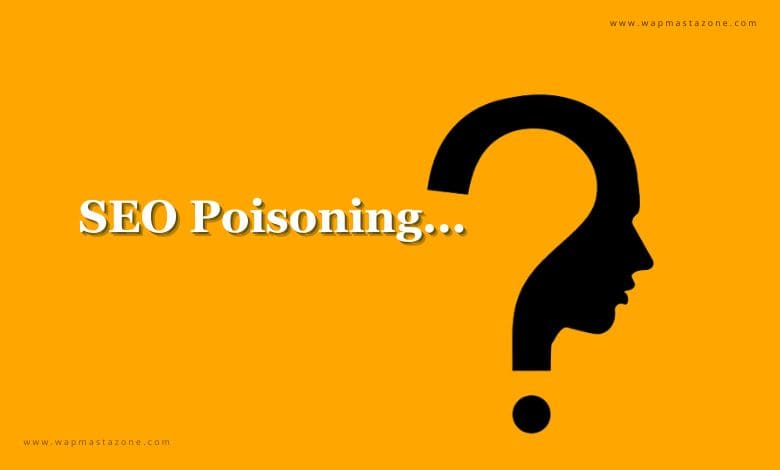
SEO poisoning is a malicious technique employed by cybercriminals to manipulate search engine results and redirect users to malicious websites. This technique is mostly adopted to compromise the user’s system, steal sensitive information, or distribute malware. Unlike traditional hacking methods that directly target a website, SEO poisoning manipulates search engine algorithms to display harmful links prominently in search results.
The perpetrators leverage popular and trending keywords, which users commonly search for, to increase the likelihood of their poisoned links appearing at the top of search engine results. These poisoned links may lead to websites hosting malware, phishing pages, or other malicious content. SEO poisoning can affect both small and large websites, making it a pervasive threat across the internet.
Also read: 15 Best SEO Plugin For WordPress
Read also: Top 80 Free SEO tools
Implications of SEO Poisoning
a. Security Risks:
SEO poisoning poses a significant security risk to users who unwittingly click on poisoned search results. Malicious websites may exploit vulnerabilities in users’ devices, leading to unauthorized access, data theft, or the installation of malware.
b. Reputation Damage:
For businesses and individuals, falling victim to SEO poisoning can result in severe reputational damage. Users who encounter malicious content through a compromised website may associate the negative experience with the legitimate entity, leading to a loss of trust and credibility.
c. Financial Consequences:
Beyond reputational damage, SEO poisoning can have financial implications. Businesses may incur costs related to cybersecurity measures, reputation management, and potential legal consequences if the compromise leads to the loss of customer data.
d. Search Engine Penalties:
Search engines are continually improving their algorithms to provide users with reliable and secure search results. If a website is flagged for hosting malicious content due to SEO poisoning, it may face penalties such as a drop in search rankings or complete removal from search engine indexes.
Also read: 7 Ways to Improve Website Speed For SEO
Read also: The Art of Writing Blog Post For SEO
5 Common SEO Poisoning Techniques
a. Keyword Stuffing:
Keyword stuffing involves overloading a webpage with keywords, often in an unnatural and excessive manner, with the aim of manipulating search engine rankings. While keywords are essential for SEO, stuffing them inappropriately can lead to penalties from search engines.
b. Cloaking:
Cloaking is a technique where the content presented to search engine crawlers is different from what is shown to users. Attackers use cloaking to display content that is optimized for search engines, but may contain malicious links or malware. This misdirection can lead to users being exposed to harmful content without their knowledge.
c. Doorway Pages:
Doorway pages, also known as gateway pages or bridge pages, are created specifically for search engines and not for human visitors. These pages are optimized for certain keywords and are designed to redirect users to other pages, often leading to malicious or irrelevant content. Search engines may penalize websites that use doorway pages.
d. Phishing Attacks:
SEO poisoning can also be used to drive traffic to phishing websites. Attackers create web pages with content designed to mimic legitimate sites, tricking users into entering sensitive information such as login credentials or financial details. These fake pages can be promoted through SEO tactics to appear in search engine results.
e. Malicious Backlinks:
Building a network of malicious backlinks is another SEO poisoning technique. Attackers create links from reputable websites to their malicious sites, aiming to improve the malicious site’s search engine ranking. These links can lead users to sites hosting malware or phishing pages.
Also read: How to Improve SEO Performance Using Structured Data
Read also: 140 SEO Abbreviations, Acronyms, and Terms For SEO Optimizer
10 Ways to Avoid SEO Poisoning
a. Regular Website Security Audits:
Conducting regular security audits can help you to identify and address vulnerabilities on your website. Employing security professionals or use reputable security tools to detect and mitigate potential threats before they are exploited by cybercriminals.
b. Secure Website Development Practices:
Adopt and secure best coding practices during website development in order to preventing SEO poisoning. This includes keeping software and plugins up to date, validating user inputs, and implementing secure authentication mechanisms. Regularly patching and updating your website’s content management system (CMS) is also important.
c. Monitoring Website Traffic and Analytics:
Keep a close eye on your website’s traffic patterns and user behavior through analytics tools. Sudden spikes in traffic or changes in user engagement metrics may indicate a security issue. Ensure to regularly monitor these metrics as this can help you detect and respond to potential SEO poisoning attacks promptly.
d. Use of Secure Sockets Layer (SSL) Certificates:
Implementing SSL certificates on your website not only enhances security but also boosts your search engine rankings. Search engines prioritize websites with secure connections, and users are more likely to trust a website with an “https://” protocol. SSL certificates encrypt data exchanged between users and your website, preventing potential eavesdropping by attackers.
Recommended: Social Engineering and Prevention Measures
Also read: Top 10 Tips on How to Identify Phishing Emails and Links
Related: 10 Completely Free SEO Courses For SEO Beginner
e. Educate Your Team:
Human error is a common entry point for cyber threats. Educate your team, especially those responsible for website management, about the risks associated with SEO poisoning. Provide training on recognizing phishing attempts, suspicious links, and the importance of following secure online practices.
f. Regularly Update:
Ensure that all software, including the operating system, web server, CMS, and plugins, is regularly updated and patched. Cybercriminals often target outdated software with known vulnerabilities. Keeping your software up to date reduces the likelihood of exploitation.
g. Implement Website Firewalls:
Deploying a web application firewall (WAF) helps protect your website from various online threats, including SEO poisoning. WAFs can detect and block malicious traffic before it reaches your website, providing an additional layer of defense against cyber threats.
h. Use Strong Authentication Methods:
Implement strong authentication methods, such as two-factor authentication (2FA), to secure access to your website’s administrative panels. This adds an extra layer of protection, making it more challenging for unauthorized individuals to compromise your website.
Also Read: 10 Signs of a Malware Infection on your Computer
Also read: How to Stay Safe On The Internet
i. Regularly Back Up Your Website:
Regularly back up your website’s data and files. In the event of a successful SEO poisoning attack or any other security incident, having up-to-date backups ensures that you can quickly restore your website to a secure state.



